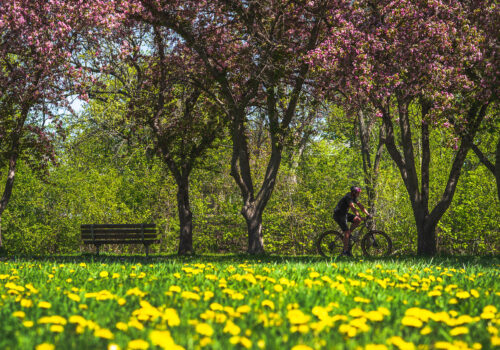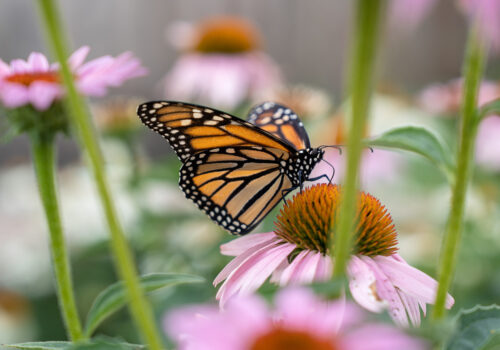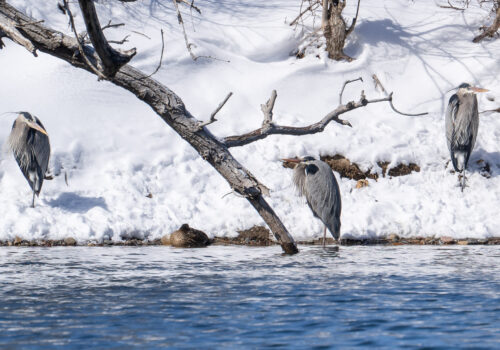Healthy Lawns for Healthy Water
Our lawns and gardens are places for us to relax, and help connect us to the land, soils, and water at our homes. Turfgrass and lawns are particular in their needs and can prove tough to manage, though keeping your turfgrass in good health also can help water quality.
We’ve put together a quick guide (and how-to video) on tips and considerations for lawn care and maintenance.
Mow High and Often
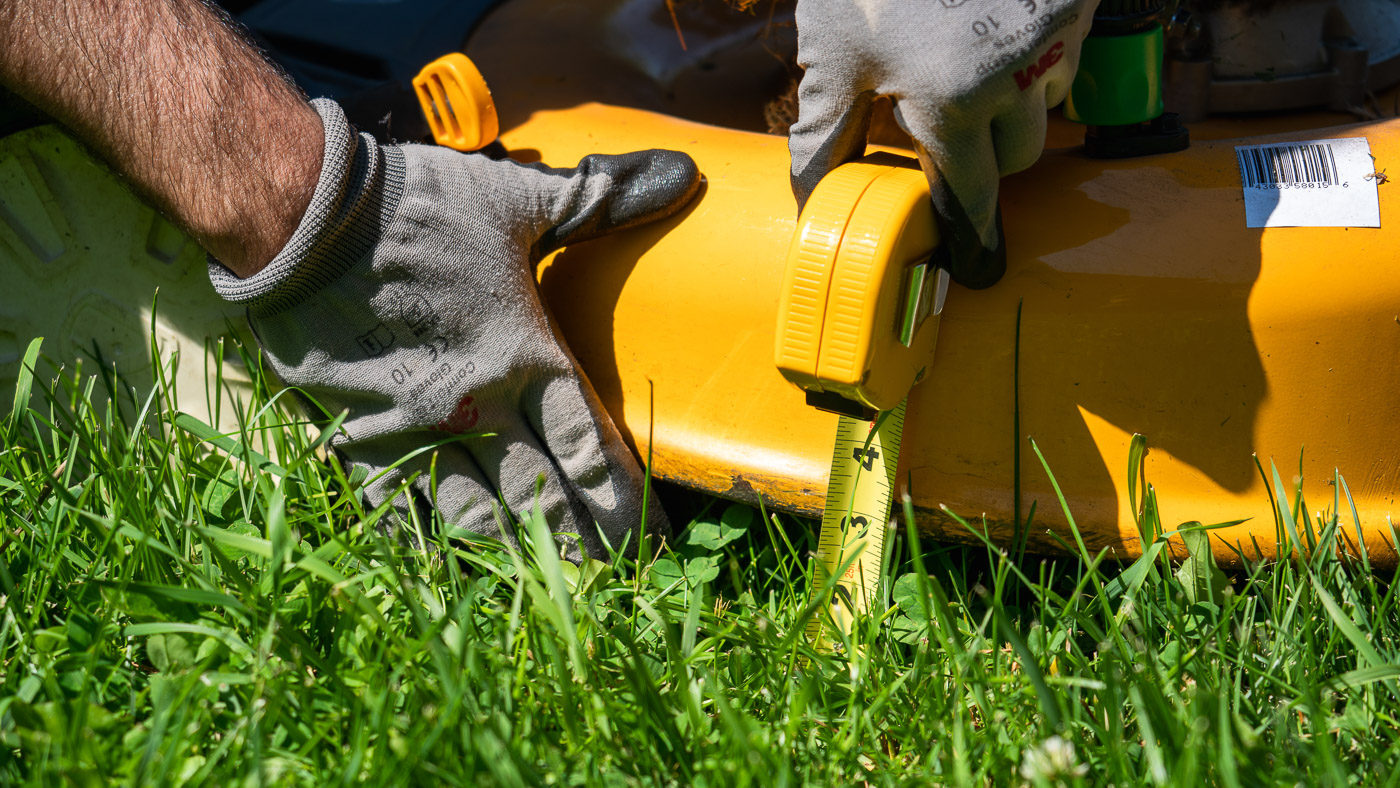
Longer grass (but not longer than 3 to 3.5 inches) should be your goal when mowing. Check the decking height on your mower with a ruler or tape measure to make sure you’re in that range.
Longer grass blades will make your turf more dense and lush, looking healthier overall. Additionally, longer grass will capture more grass clippings and other pollutants that could otherwise run off into streets and enter waterbodies via the stormsewer system.
If you let your grass get too long, it could require cutting more than one-third of the total length of the grass blade. This can leave large clumps of grass that smother the grass below, stressing your lawn. Some of those clumps might also find their way into nearby stormdrains. Mowing at least once per week can help keep your grass on the right path, especially in spring, when grass grows faster than in other seasons.
With a denser lawn, your grass will capture more rain, retain more moisture, shade out weeds, and help keep pollutants out of stormdrains.
Grass Clippings for Fertilizer
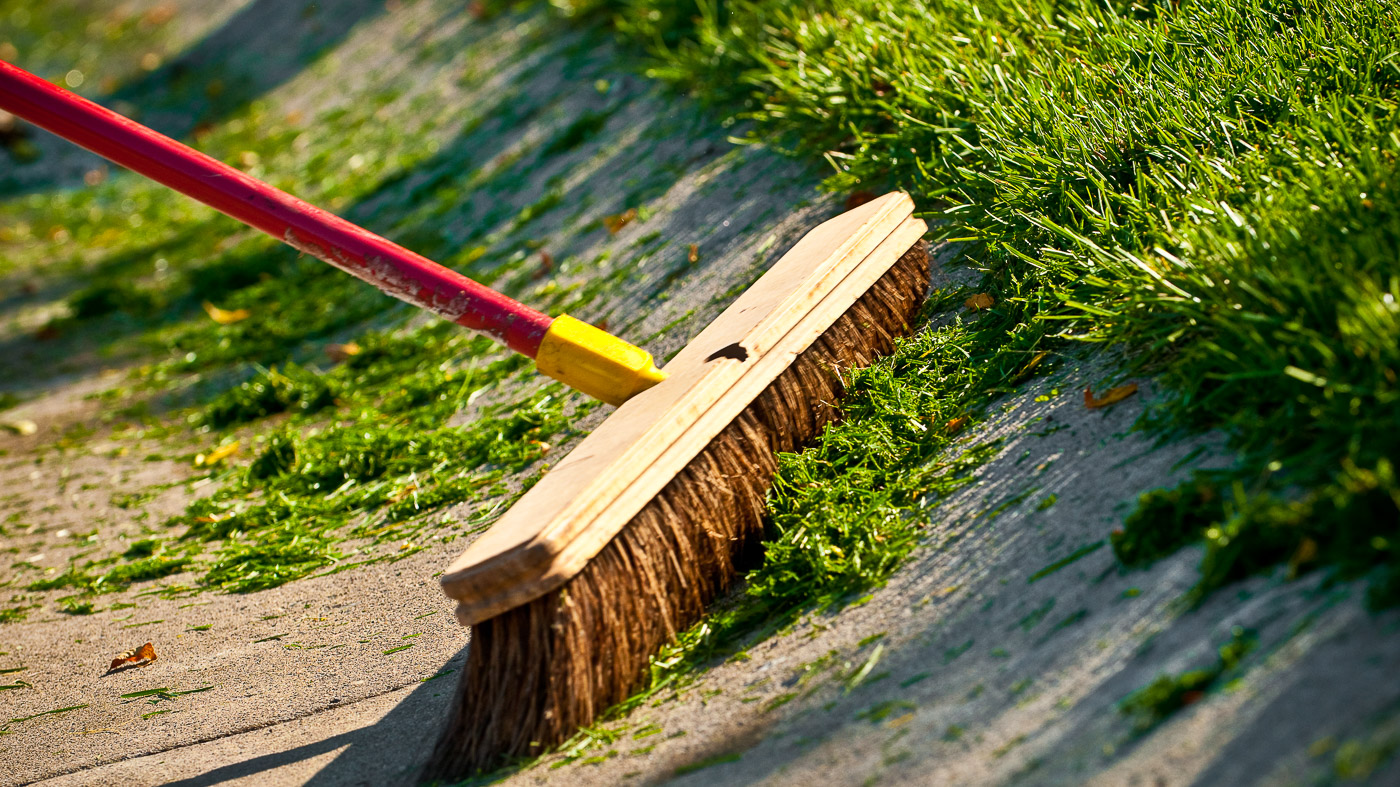
Keeping your grass clippings on your lawn fertilizes it. In fact, mulching your grass clippings provides the equivalent of one fertilizer application over the course of the growing season. This is because grass clippings are rich in nitrogen and phosphorus — nutrients that are great for yards, but bad for water quality.
Make sure that grass clippings stay on the lawn, because once they get washed into local waterbodies, they cause algal blooms that can ruin aquatic ecosystems. If you notice grass clippings on your sidewalk, driveway or on the street, sweeping them up will help keep them out of stormsewers and away from lakes and rivers.
If you’d prefer not to keep your grass clippings, disposing of them in compost or yard waste will work too.
Watering Considerations
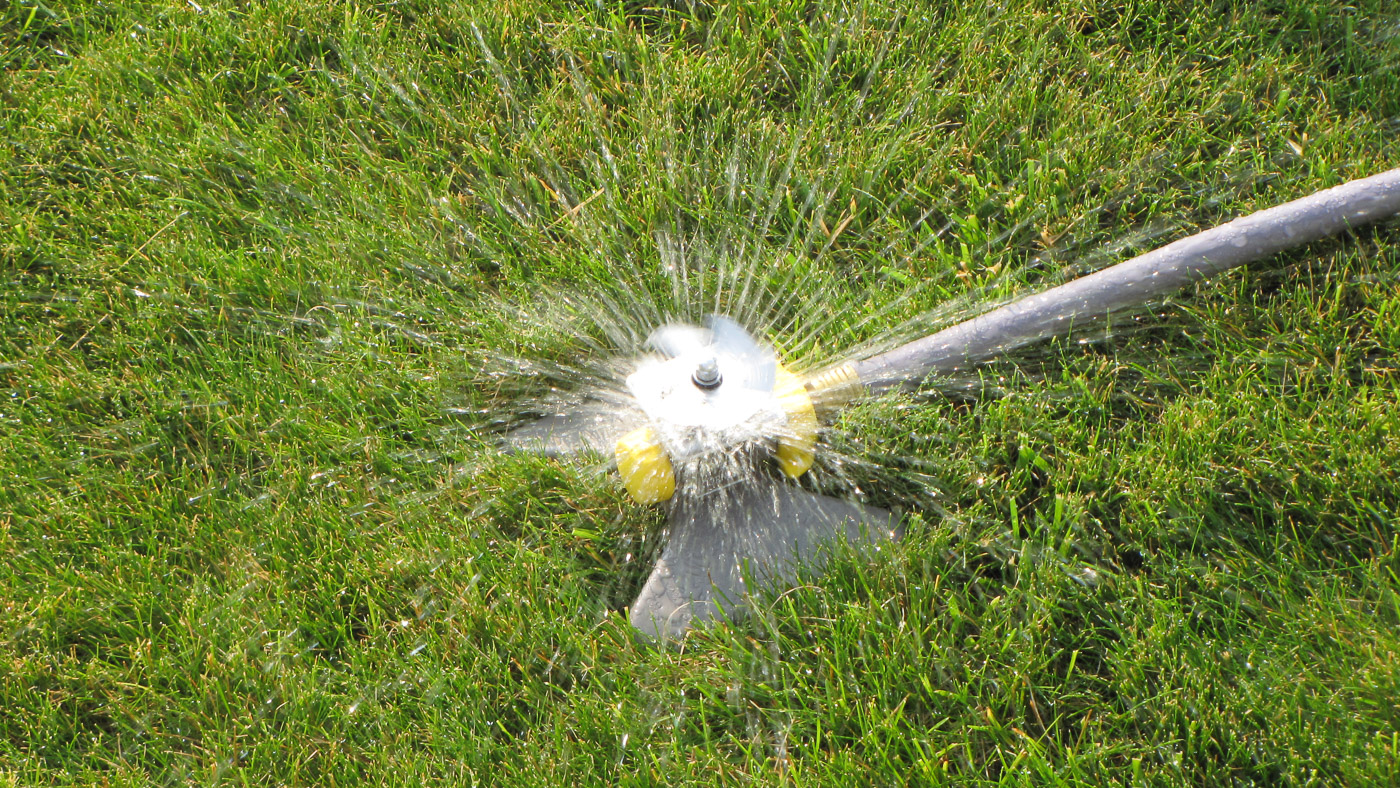
Most turfgrass lawns need around 1 inch of water per week in order to stay green. If you’re inclined to water your lawn, a rain gauge can help you identify how much water it has already absorbed in a given week, and give you an idea of how much extra water you’ll need to supply from your tap (or rainbarrel).
On the other hand, if a little brown or yellow doesn’t bother you, then don’t worry! It’s not unusual for healthy lawns to turn brown in mid-summer. This brown turfgrass is far from dead; it’s only going dormant, which means it will perk back up on its own later on.
Beyond Turf and Lawn
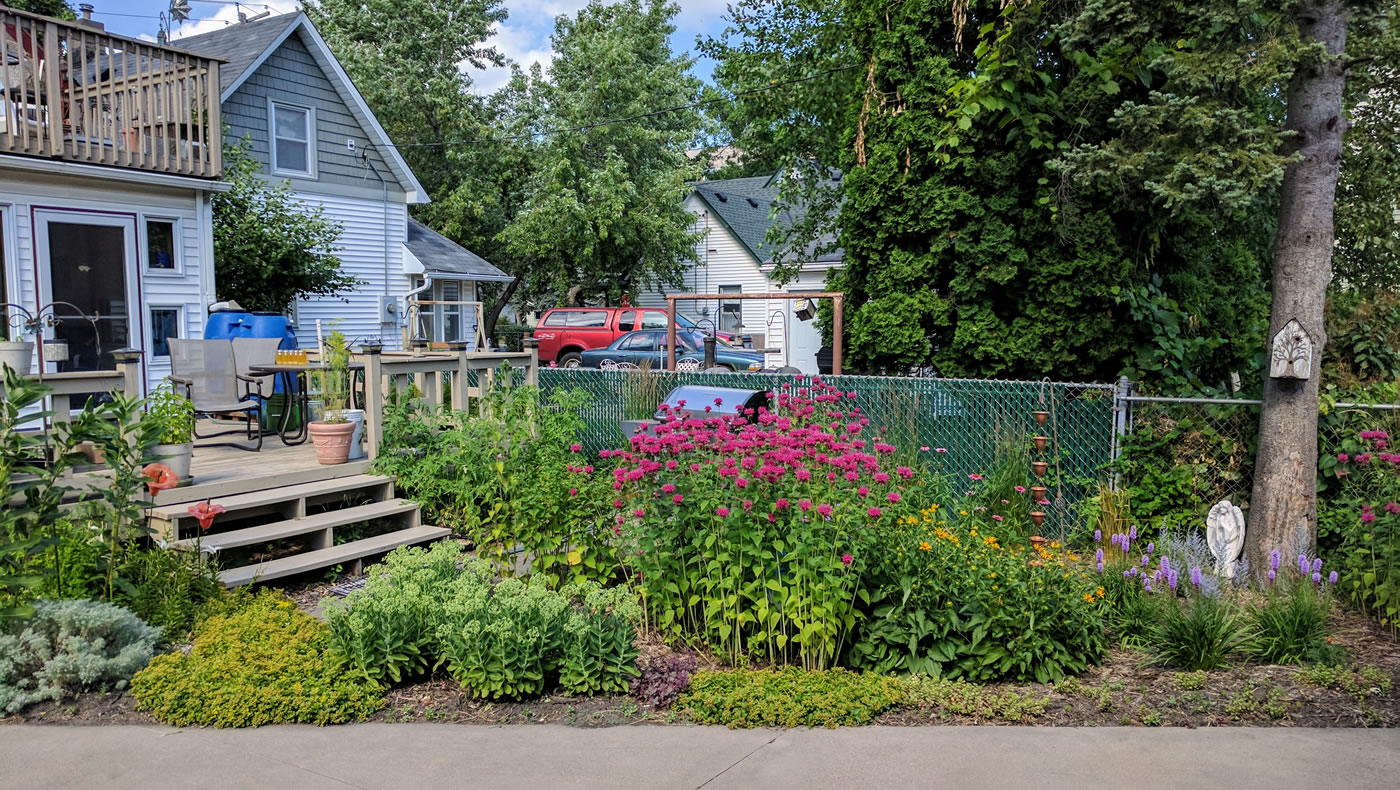
If you find that managing your turf this often isn’t for you, or you’d like less traditional turf, there are options!
One option is a lawn with grass-like ground cover that uses a no-mow or low maintenance grass mix. These mixes are designed to require less mowing, less watering, and less effort by using different grass and fescue species.
Another route is to get rid of your grass and turf. Planting more gardens — specifically with native plants, shrubs and trees — can be a wonderful alternative to a traditional yard. Gardens tend to be better at soaking up stormwater and at providing much-needed habitat for pollinating species. Of course, there will be maintenance, but the level needed will be up to you!
For more information and ideas around watering, fertilizers, and other lawn maintenance tips, please check out this page from our Good Neighbor Guide: https://www.mwmo.org/learn/preventing-water-pollution/lawn-care/

